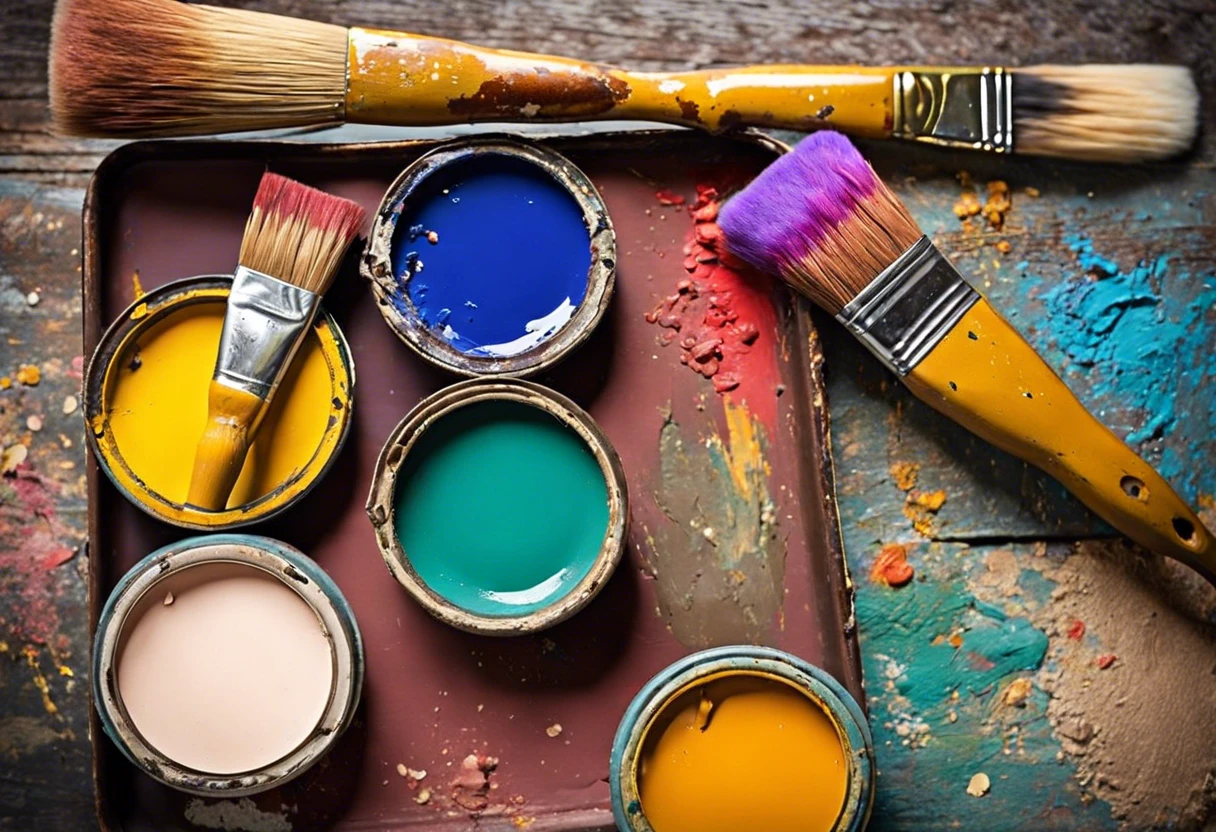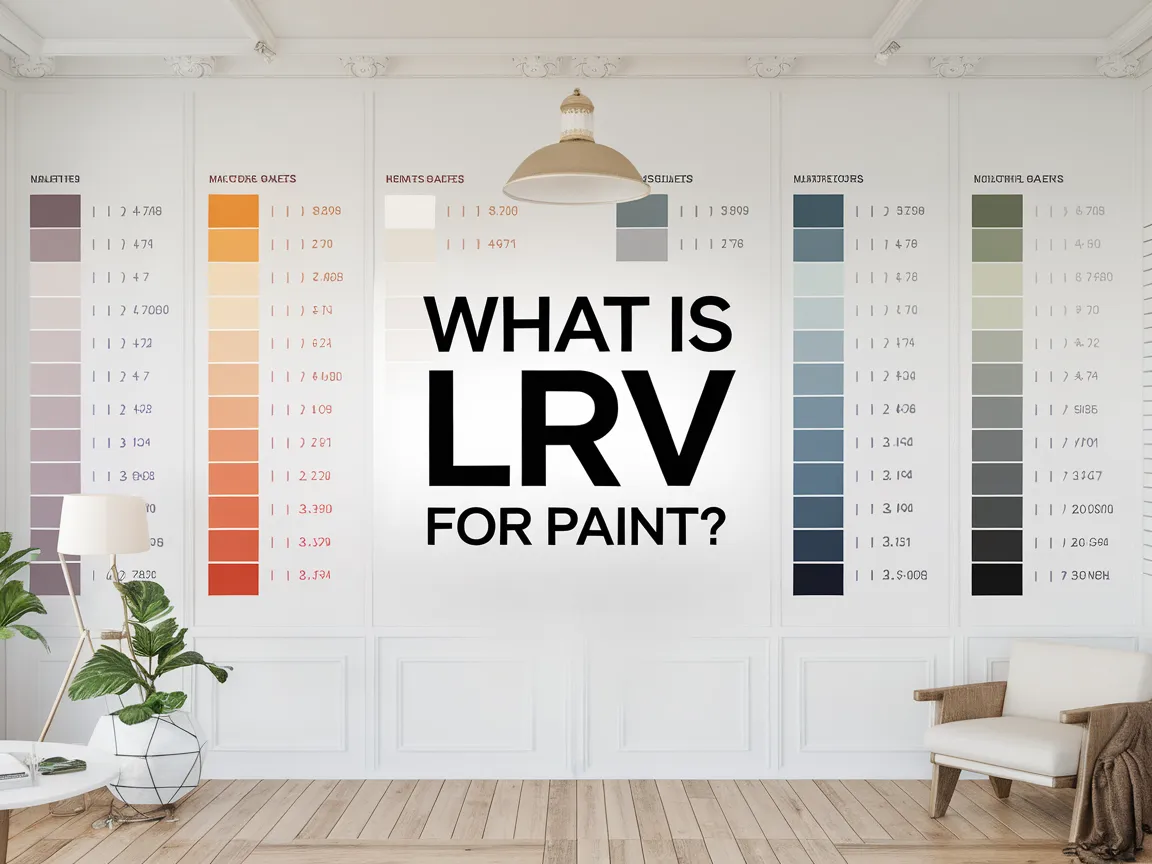Can You Thin Paint With Water?
Published on: March 22, 2025 | Last Updated: January 7, 2025
Written By: Sarah McClintock
Thinning means making something lighter, like adding water to juice. It helps the paint spread easier and gives it a smooth look.
So, can you thin paint with water? It’s super important to get it right because the wrong mix can ruin your art. I’ve had my share of messy projects, and trust me, knowing how to thin correctly saves a lot of tears.
In this guide, we’ll explore what thinning paint is, key tips before you start, a step-by-step method to thin paint with water, the best colors to use, and common problems that pop up. You’ll learn about different paint types and how they behave when thinned, and I’ll even throw in some creative DIY project ideas using thinned paint!
Contents
- 1 Can You Thin Paint With Water?
- 2 What is Thinning Paint?
- 3 Essential Considerations Before You Begin Thinning Paint
- 4 Step-by-step Guide to Thinning Paint With Water
- 5 Types Of Paint and Their Thinning Characteristics
- 6 Factors Affecting the Thinning Process Of Paint With Water
- 7 Common Issues When Thinning Paint With Water
- 8 Finishing Touches After Thinning Your Paint
- 9 Creative DIY Project Ideas Involving Thinned Paint
- 10 Alternative Thinning Agents Besides Water
- 11 Water Quality Effects on Paint Thinning
- 12 Additional Benefits of Thinning Paint With Water
- 13 Comparative Chart of Paint Thinning Techniques
- 14 Frequently Asked Questions (FAQs)
- 15 Conclusion
- 16 Additional Resources
Can You Thin Paint With Water?
Yes, you can thin paint with water, especially water-based paints like acrylics. Adding water increases fluidity, making it easier to apply. Just mix a bit at a time until you find the right consistency for your project. If you’re working with 3D printed objects, you might want to explore specific painting techniques for prints.
What is Thinning Paint?
Thinning is the process of reducing paint’s viscosity by adding a solvent. Typically, a thinner is a liquid medium like water, mineral spirits, or turpentine. It’s crucial for achieving the desired consistency in paint thinning techniques, especially for smooth application or precise detailing. When you’re done painting, proper brush maintenance is key, so clean your brushes thoroughly.
When considering thinning, you might wonder if you can thin paint with water. I tried this while painting a bright, breezy scene. It created stunning transparency but needed careful attention to the paint mixture. If you’re curious about creating the perfect paint consistency, mixing paint colors effectively can help you achieve the desired result.
While working on a watercolor landscape, the right thinning technique helped me mix perfect shades of blue. A good tip is to understand how to paint reflections in water—they depend on the transparency of your layers, thanks to proper thinning. This balance can significantly elevate your art. When determining the ideal canvas size for your digital artwork, you might want to explore optimal digital painting dimensions.
Essential Considerations Before You Begin Thinning Paint
What do you need to get started?
- Water-based paint: Choose a specific water-based paint, like Behr Premium Plus or Sherwin-Williams SuperPaint, for the best results. It’ll mix easily with water.
- Measuring cup: Use a 250 mL (1 Cup) measuring cup for accurate measurements. Consistency is key when thinning paint.
- Stirring stick: Grab a clean wooden stir stick, like those from a craft store. You’ll need it to mix the paint thoroughly.
- Paint thinner (Optional): Consider using Gamsol or Minwax Polycrylic if you need more than just water. These can enhance specific finishes.
- Drop cloth: A simple fabric drop cloth will protect your surfaces from getting messy while you experiment.
We covered important factors to consider before thinning paint. We will now cover a detailed guide on thinning paint with water.
Also See: Can Kilz Be Used As Paint? Learn Its Versatility

Step-by-step Guide to Thinning Paint With Water
Here are the steps for making water-based paint lighter and easier to apply.
-
Assess the Type Of Paint
Identify if you’re using acrylic, latex, or watercolor paint. Not all types thin well with water. Water-based paints generally mix easily, but oil-based paints don’t; using water on those is a big no-no. When working with oil paints, proper palette maintenance is crucial, and you can master cleaning your oil palette effectively.
Acrylic paints absorb water well and thin effectively. If you’re using latex paint, it may need up to a 10% water ratio to lighten it without compromising coverage.
-
Choose the Right Ratio Of Water to Paint
The right balance is crucial for good results. Start with 1 part water to 4 parts paint (About 0.25 Liters Per Liter) and adjust as needed.
Too much water can weaken the paint’s adhesion and coverage. I once added too much water, and my colors didn’t pop the way I wanted!
-
Mixing Techniques for Optimal Thinning
Pour the water into your container with paint. Stir slowly with a stir stick or brush for at least one minute to ensure an even mix.
I recommend using a palette knife for acrylics, as it breaks down chunky paint better. For latex paints, a whisk can help incorporate more water without over-blending.
-
Test the Thinned Paint
Before starting your piece, test a swatch on scrap paper or canvas. This shows how the thinned paint reacts, so check the consistency carefully.
If the paint temporarily alters color or opacity, add more paint to balance it. Finesse is key to achieving those soft water-like effects!
You should now have a good understanding of thinning paint with water. In the next part, we’ll discuss various paint types and their thinning traits.
Types Of Paint and Their Thinning Characteristics
Now, let’s explore the different types: Acrylics, Watercolors, Oil Paints, and Gouache.
-
Acrylics
Acrylic paint is water-based, so you can easily thin it with water. You can typically mix in up to 30% water to achieve the desired consistency.
-
Watercolors
Watercolors are naturally thinned with water. You can adjust the water ratio for washes, while a higher water content creates lighter hues.
-
Oil Paints
Oil paints require mineral spirits or turpentine for thinning, not water. Adding water can result in muddy colors and poor adhesion.
-
Gouache
Gouache is similar to watercolor but opaque. You can thin it with water, and just 10-20% can effectively change its texture.
From my experience, I prefer acrylics for their versatility. I can thin them with water or a medium, achieving great textures and effects in my landscapes.
We’ve wrapped up the different types of paint and their thinning properties here. Let us turn our attention to factors influencing paint thinning with water.
Factors Affecting the Thinning Process Of Paint With Water
What factors determine if you can successfully dilute paint with water?
-
Type of Paint: Water-based paints, like acrylics, thin easily, while oil-based paints don’t.
-
Paint Consistency: Thicker paint may need more water to achieve the desired flow.
-
Water Quality: Tap water with impurities can affect the paint’s finish and performance.
-
Ratio of Water to Paint: A small amount of water preserves color; too much leads to transparency.
We have now covered the factors influencing paint thinning with water. The next section discusses common problems that may arise.

Common Issues When Thinning Paint With Water
Last weekend, my friend tried thinning his acrylic paint with water for a vibrant sunrise backdrop. He faced unexpected clumping and opacity.
To fix this, mix 10-20% water with the paint. This keeps the pigment strong while achieving the desired consistency. Using a palette knife can help mix evenly.
Finishing Touches After Thinning Your Paint
After adjusting your paint’s viscosity, stir well for 3-5 minutes. This ensures a consistent mix and prevents clumps. Clean brushes and tools with water promptly to avoid difficult cleanups.
Inspect your project for defects like streaks. Check at a 45-degree angle to the light. Use products like Polycrylic to repair any inconsistencies if necessary.
Here’s a pro tip from my past projects: invest in a moisture meter to measure humidity, as high moisture (Over 60%) can reduce paint adhesion.
Creative DIY Project Ideas Involving Thinned Paint
Ever thought of sprucing up your space with handmade art? You can make vibrant watercolor coasters or simply transform plain canvases into dreamy gradient wall art using thinned paint!
To create coasters, you’ll need inexpensive tiles, acrylic paint, and some water. Typically, you’re looking at around $20-$30 and just a few hours to make a set! For wall art, grab a canvas, paint, and brushes — budget roughly $25 and give yourself an afternoon of color-mixing magic.
Now, about thinning paint. While I’ve dipped my brushes in water before, try using rubbing alcohol for a smoother blend — it gives a unique reach. You can even use a fabric medium to create interesting textures in your painting; it’s a game-changer! When paint starts to dry on your brush, knowing how to restore dried paintbrush techniques can save your valuable art tools.
Alternative Thinning Agents Besides Water
If you’ve ever wondered about options other than water, let’s dive into some alternatives that can also help in thinning paint.
-
Flow Improvers
These additives improve paint flow without altering color properties. They’re excellent for acrylics. Brands like Golden and Liquitex offer great options.
-
Mediums
Specialized mediums can enhance transparency and texture. For instance, using an acrylic medium can keep your paint’s vibrancy while thinning it.
-
Varnishes
For oil-based paints, using varnishes can thin while adding a protective finish. Just ensure to follow the application instructions for the best results.
Water Quality Effects on Paint Thinning
The type of water you use makes a big difference when thinning paint. Let’s break it down.
| Water Type | Effects on Paint | Best For |
|---|---|---|
| Tap Water | Can contain minerals that might affect color. | General use if paint is low on pigment. |
| Distilled Water | Free from impurities, offers consistent results. | Best for watercolor and detailed artists. |
| Spring Water | Mineral-rich; effects depend on specific minerals present. | Only if a more natural approach is preferred. |
Additional Benefits of Thinning Paint With Water
Thinning paint isn’t just about making it lighter; it can improve your painting experience and outcomes in many ways.
-
Enhanced Blending
When you thin your paint, it flows easier. This is a game-changer for blending colors smoothly. Ever struggled to mix two shades? A little water can help!
-
Improved Transparency
Thinned paint allows for transparent layers, perfect for glazes. You can effectively build colors while retaining detail and depth. I love doing this for sunsets—watch those colors pop!
-
Better Coverage on Textured Surfaces
Thinned paint can reach all the nooks and crannies in a textured surface, ensuring better coverage. Think about all those bumps on a canvas; you don’t want to miss them!
-
Reduced Brush Marks
Do you hate the visible brush strokes in your painting? Thinning reduces those pesky marks, giving you a smooth, flawless finish. It’s like magic for your artwork!
Comparative Chart of Paint Thinning Techniques
Here’s a quick table comparing different methods of thinning various paint types.
| Paint Type | Thinning Method | Recommended Ratio | Effect on Finish |
|---|---|---|---|
| Acrylic | Water | 1:4 (25% water) | Smooth, vibrant |
| Watercolor | Water | 1:1 to 1:5 (up to 50% water) | Soft, translucent |
| Latex Paint | Water | 1:10 (10% water max) | Maintains thickness |
| Oil Paint | Mineral Spirits | 1:2 (33% thinner) | Subtle, depth |
Frequently Asked Questions (FAQs)
How to Thin Water-based Paint Effectively?
To thin water-based paint effectively, you can add water slowly until you reach the desired consistency. This is important because it helps achieve smoother application, especially for spray painting, where the ideal viscosity is around 20-30% reduced thickness.
How to Seal a Watercolor Painting?
You can seal a watercolor painting using a spray fixative designed for watercolors. This step is crucial as it protects the painting from water damage and fading. Many artists find that one 12 oz (355 Ml) spray can covers approximately 25 ft² (2.32 M²).
Can You Use Acrylic Paint for Water Effects?
Yes, you can use acrylic paint for water effects by using techniques that mimic reflections and ripples. This method enhances realism by applying lighter and darker tones to create depth in a piece. You may experiment with ratios like 1:3 for paint to water for fluid effects. When working with acrylics in challenging temperatures, knowing how to paint in cold weather conditions becomes crucial for maintaining paint quality.
How to Start Painting Watercolors?
To start painting watercolors, choose quality watercolor paper, and use a variety of brushes. This is essential to achieve different textures in your artwork. Typically, 300 gsm (140 Lb) paper works best for preventing warping when wet. When working with watercolors, temperature can significantly impact your painting technique, so knowing watercolor painting techniques matters.
How to Paint Reflections in Water?
To paint reflections in water, simply mirror the shapes and colors from above the waterline onto your surface. This technique adds realism and depth to your landscapes. Keep in mind that muted colors usually reflect more accurately what’s above the surface.
Also See: Can You Get Spray Paint Out Of Clothes? Here’s How!
Conclusion
We are almost done. We covered what thinning paint means, essential considerations for thinning, a step-by-step guide, types of paint and their characteristics, factors influencing the thinning process, common issues faced, finishing touches, and creative DIY project ideas.
So, can you thin paint with water? Yes, you can, but it depends on the type of paint. Water-based paints are the easiest to thin with water. Feel free to reach out if you have further questions about thinning techniques or suggestions for your painting projects.
For more insights and resources, explore our homepage: Paint Answers.
Additional Resources
- Betti, C., & Sale, T. (2012). Drawing: A Contemporary Approach (6th ed.). Belmont, CA: Cengage Learning.
- r/minipainting on Reddit: Thinning with water vs medium
- The Right Way to Water-Down Paint – A Butterfly House




